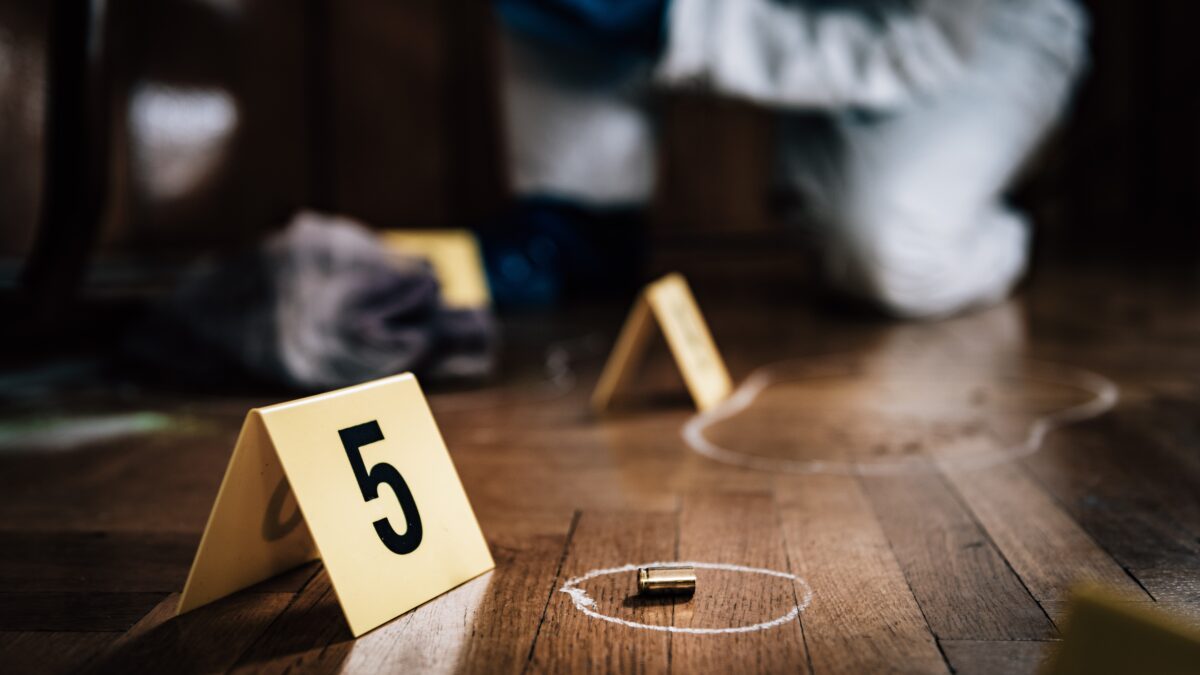
Taking the Crime Scene into the Interrogation Room & Forensic Examination of Violent Crime Scenes
Taking the Crime Scene into the Interrogation Room – Do the Pieces Fit? – July 21-22, 2025
This fast paced interactive two (2) day seminar focuses on understanding the crime scene from a behavioral approach and then taking that valuable understanding directly into the interrogation room. What can be learned from the crime scene becomes truly powerful when it can be used by the skilled investigator in their efforts to narrow down their pool of suspects through the interview and interrogation process. Crime scenes have a “psychological fingerprint” as well as physical evidence and in this course the student will learn the skills necessary to utilize their knowledge of both, in the one on one, face to face interrogation of the potential suspects. Criminals are people and people are predictable. Their thoughts, feelings and emotions are seen in their crime and can be “read” through the evidence they leave at the crime scene. The ability of the trained investigator to properly interpret what they and their crime scene specialists see at the crime scene will provide them with that extra “edge” when the interrogation starts. If you have the right suspect in the interrogation room chair, they will soon realize that you know more about the crime they committed and how they committed it than they ever thought possible. You will then be in a position of power with a much greater chance of obtaining a confession. They simply can’t get around the fact that “You Know”.
Criminals are people and people are predictable. Their thoughts, feelings and emotions are seen in their crime and can be “read” through the evidence they leave at the crime scene. The ability of the trained investigator to properly interpret what they and their crime scene specialists see at the crime scene will provide them with that extra “edge” when the interrogation starts. If you have the right suspect in the interrogation room they will soon realize that you know more about the crime they committed, how they think, and how they committed it. You will then be in a position of power with a much greater chance of obtaining a confession. They simply can’t get around the fact that “You Know”.
This course is designed for criminal investigators, crime scene specialists, as well as uniform officers who have the responsibility of conducting their own interviews and interrogations. It stresses the vital importance of how the “crime investigation team” must work together to maximize the information gained by a thorough physical and psychological examination of the crime scene. It is not a matter of how big your department is, but instead a matter of how sincere your commitment is to learn a new and better way. It will forever change the way you work crime scenes and interrogate your suspect. At the end of the class, students will work a real homicide case that has all of the behavioral clues present (psychological fingerprints), it’s a matter of “do you see them”. “We see what we want to see, and we can see what we are trained to see”.
Target Audience
This course is designed for criminal investigators, crime scene specialists, as well as uniform officers who have the responsibility of conducting their own interviews and interrogations. This class will benefit any investigator or officer who is looking to improve his/her skills in the art of interrogation, or the gentle art of persuasion. Three things solve cases: 1. Physical evidence, 2. Witnesses, 3. Confessions. It is very important to any investigation to know how to get a criminal suspect to confess, or get them to “yes”. This class will make you a much better interrogator and give you the added confidence to enter a room and get the suspect to confess.
Must Bring to Class
Dress is business casual.
Forensic Examination of Violent Crime Scenes – July 23-25, 2025
Crime is typically divided into two categories: crimes against property and crimes against persons. While the former is serious and may indeed constitute the majority of departmental caseloads, it is the latter that frequently results in serious bodily harm or death. Therefore, it is imperative that appropriate forensic and law enforcement personnel be able to successfully recognize, document and/or interpret evidence found at these types of scenes. Furthermore, it may be important in a particular scene to be able to sequence a series of events to reconstruct how a crime may have occurred and the actions that were involved. This may allow the trained analyst/investigator to support or contradict statements offered by suspects, victims and/or witnesses, thereby providing further insight into an investigation.
This advanced course will present both the theory and practical application of several techniques that are essential to crime scene examination and reconstruction of violent crimes. Practical exercises and case studies will be utilized to reinforce the material presented.
Target Audience
This course is designed for anyone who is tasked with investigating and processing violent crime scenes, particularly those crimes involving bloodshed. Although it will be beneficial to have prior training and experience in bloodstain pattern analysis, it is not a requirement for participation in the course. Even if you are not the person who will be interpreting bloodstain and shooting evidence, you should attend this course if you will be responsible for documenting these types of crime scenes.
Must Bring to Class
Students should bring their camera (digital preferred), lenses, batteries, digital media, off-camera flash with remote cord, tripod (if available), and flashlight. Students should also bring the instruction manuals for their specific camera and flash, if available. Also, practical exercises will be conducted both inside and outside. Students are advised to bring clothing suitable for possible soiling as well as inclement weather.


